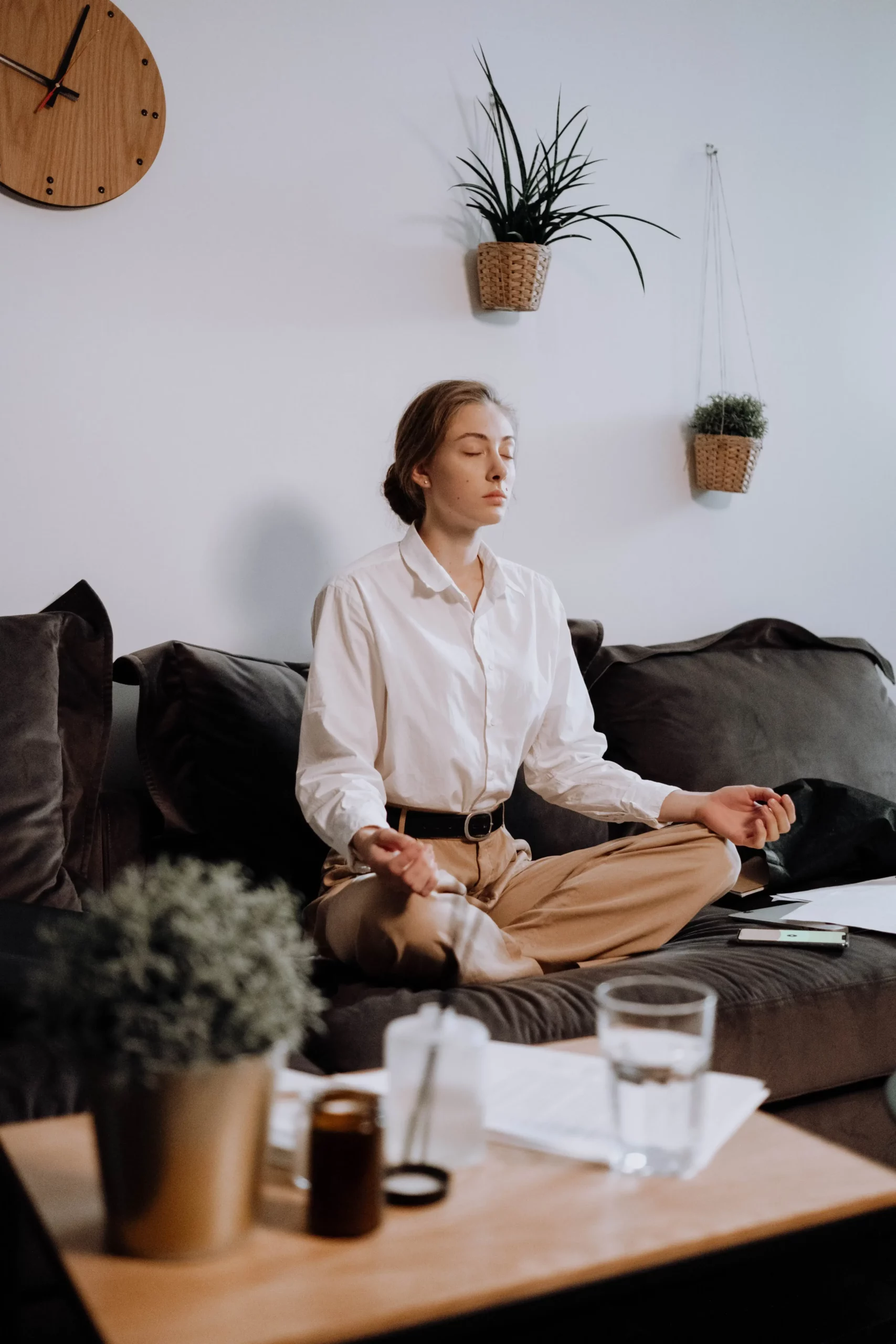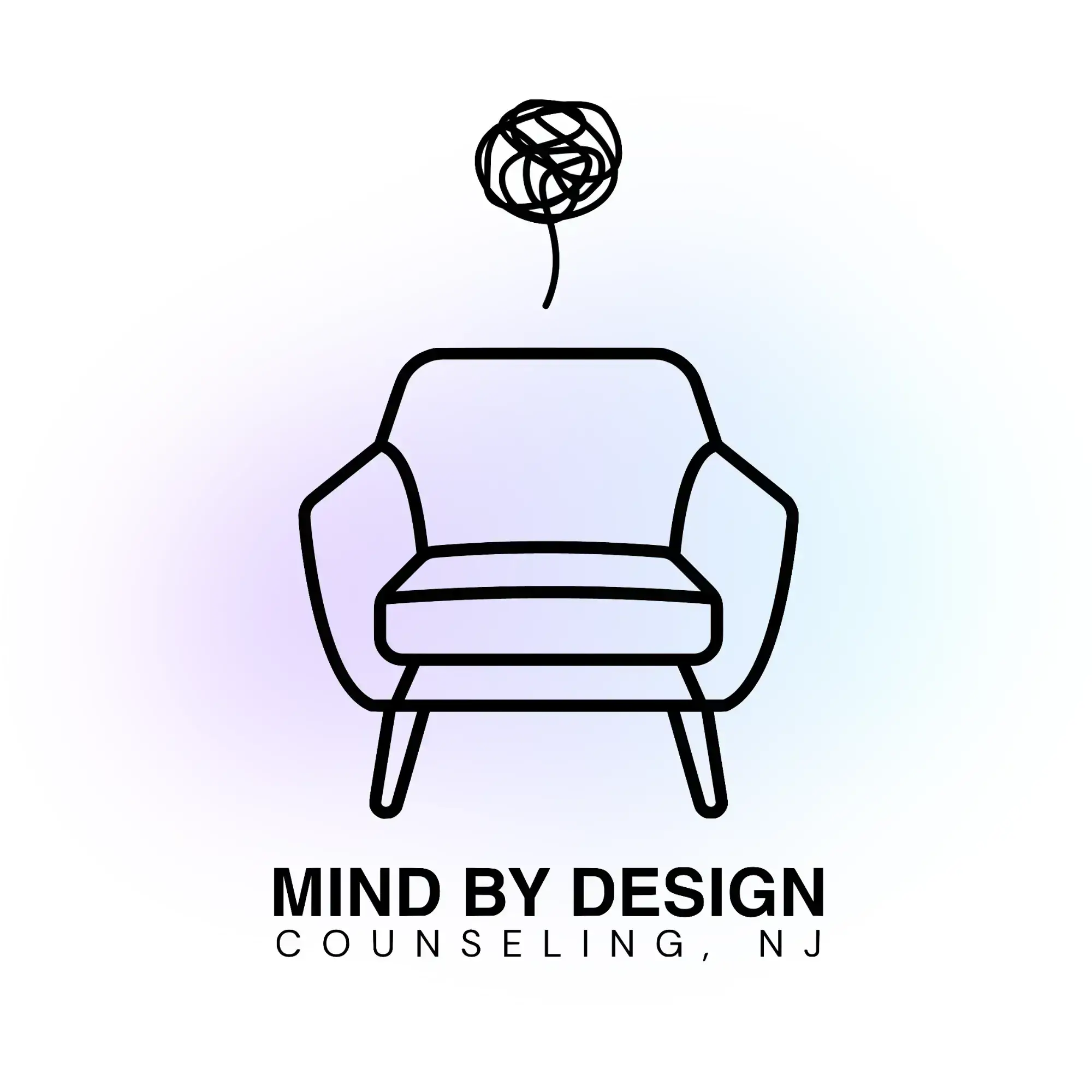4 Simple Nervous System
Regulation Techniques

By understanding the key mechanisms of nervous system regulation, you can boost your well-being and improve your response to stress & everyday challenges.
Understanding the Nervous System
The nervous system is the body’s control center, managing everything from our movements to our reactions to the environment. It’s a complex network of nerves and cells that work together to make sure our bodies function properly. The nervous system has several key parts, each with a specific role in keeping the body in check.
Sympathetic, Parasympathetic, & Central Nervous System
The sympathetic and parasympathetic systems are parts of the autonomic nervous system, which handles involuntary bodily functions. The sympathetic system gets the body ready for action, while the parasympathetic system helps the body rest. The central nervous system, made up of the brain and spinal cord, processes information and sends out instructions.
Mental Health & the Nervous System
Mental health and the nervous system are closely linked, with each affecting the other in significant ways.
Trauma’s Impact on the Nervous System
Trauma can disrupt the nervous system, leading to issues like anxiety and chronic stress. This makes it crucial to address and manage trauma to maintain a healthy nervous system.
The Impact of Childhood Experiences
Childhood experiences shape the nervous system. Positive experiences can build resilience, while negative experiences can leave lasting effects, highlighting the importance of a supportive environment during childhood.
Nervous System Regulation Techniques
Mental health and the nervous system are closely linked, with each affecting the other in significant ways.
1. Polyvagal Exercises
The Polyvagal Theory, developed by Dr. Stephen Porges, emphasizes the role of the vagus nerve in emotion regulation, social connection, and fear response. These exercises target the vagus nerve, helping to balance the autonomic nervous system. Activities like singing and deep breathing can be particularly effective. Here are two exercises based on this theory to help stimulate the vagus nerve and promote a state of calm:
Humming or Chanting
Objective:
To stimulate the vagus nerve through vocalization and resonance.
Instructions:
- Find a comfortable position, either sitting or lying down.
- Take a few deep breaths to center yourself.
- On your next exhale, begin to hum or chant a word like “Om” or “Aum,” feeling the vibration in your chest and throat.
- Continue to hum or chant for 3-5 minutes, focusing on the sensation of vibration and the sound of your voice.
- Pay attention to the calming effect this has on your mind and body.
Tips: Try to maintain a steady and comfortable pitch and volume. The goal is to create a resonant sound that you can feel in your chest and throat, as this helps to stimulate the vagus nerve.
Safe & Soothing Touch:
Objective:
To activate the vagus nerve and promote a sense of safety and calm through gentle, soothing touch.
Instructions:
- Find a quiet and comfortable space where you can sit or lie down undisturbed.
- Place one hand on your chest and the other on your abdomen.
- Take a moment to feel the warmth of your hands and the gentle pressure they provide.
- Begin to breathe slowly and deeply, focusing on the rise and fall of your chest and abdomen under your hands.
- As you breathe, imagine a sense of warmth and calm spreading from your hands to the rest of your body.
- If comfortable, you can gently stroke your arms, face, or neck with your hands, using a soft and soothing touch.
- Continue this practice for 3-5 minutes, allowing yourself to sink into a state of relaxation and calm.
Tips: The key to this exercise is to maintain a gentle and soothing touch, as this helps to activate the vagus nerve and promote a sense of safety and well-being. Ensure that your breathing is slow and deep, as this enhances the calming effect of the exercise.
2. Progressive Muscle Relaxation
PMR involves tensing and then slowly releasing each muscle group in the body, helping to reduce physical tension and stress.
3. Repetitive Patterns in Art
Creating art with repetitive patterns can have a calming effect, providing a simple way to relax and de-stress.
4. Diaphragmatic Breathing
Also known as deep breathing, this practice encourages full oxygen exchange and activates the body’s relaxation response.
Nervous System Regulation techniques in a nutshell
Understanding and regulating the nervous system is a vital part of maintaining mental and physical health. With the information and techniques provided in this article, you’re now equipped to support your nervous system and enhance your overall well-being. Embrace these practices, and find your path to a balanced and healthy life.
How do I get started as a new client?
New Clients can reach out to us directly via call, text or email here:
What is your cancellation policy?
We ask that clients provide at least 24 hours notice in the event that they need to cancel to avoid the 50% cancellation fee. we understand that life happens and do our best to be flexible & reschedule.
Does my insurance cover my visits?
We provide”Courtesy Billing” for clients who are using the Out-of-network insurance benefits.
Our Insurance Page shares a small blurb about Why We Left Insurance Panels
Do you offer traditional talk therapy?
of course! though we have some unconventional therapy approaches, we are rooted in evidenced based practices. Talk therapy is a major player in the therapy room! See What we Treat and Integrative Services for more information
Is Online Therapy As Effective As In-Person Therapy?
Online therapy is essentially face-to-face counseling, just conducted remotely. Studies show that teletherapy is as effective as traditional counseling. Professional organizations and state governments recognize its benefits and have set regulations for it. However, like any therapy, its success in achieving your goals isn’t guaranteed. It’s important to discuss with your therapist whether teletherapy is working for you.
Can I Change Therapists If I'm Not Happy?
Yes, you can switch therapists to another provider within the practice, or we can provide you a referral if preferred. We want to ensure that your time and effort are well spent, and that you are getting the relief you need, that’s why we work collaboratively with each other in the practice, as well as outside therapists who we know and trust.
How Do I Know If Therapy Is Helping?
You should feel like you’re making progress. Signs it’s working include:
Feeling comfortable talking to your therapist
Your therapist respects boundaries
You’re moving towards your goals
You feel listened to
You’re doing better in life
Your self-esteem is getting better
Is Online Therapy Easy to Use for Non-Tech-Savvy People?
Yes, it’s pretty simple to access sessions. You’ll need basic internet skills, such as opening and visiting the patient link sent to you via email. It’s similar to video chatting like Facetime or Zoom. We can also walk you through it on the phone the first time to ensure a strong connection
What Questions Should I Ask My New Therapist?
Feel free to ask anything. Some good questions are:
- How often will we meet?
- What do you specialize in?
- What experience do you have with my issue?
- What outcomes can I expect?
- How will I know I’m progressing?
- How long do you usually work with clients?
- How will we set my treatment goals?
How Should I Prepare for My First Session?
Showing up is all that you need to do! But if you really want to get the most out of session, it could help to take some time to think about what you want from therapy. It helps to write down your goals, questions you have or things that you feel are important to share.
What is the difference between associate therapists & fully licensed therapists?
Our Qualifications:
Our founder, Rebecca Sidoti, is a highly qualified, state-licensed therapist and supervisor with extensive training in anxiety related disorders and innovative treatment such as Ketamine Therapy. Mind by Design Counseling adheres to standards set by the our governing counseling boards.
To see each providers credentials, training and licenses, visit our “Meet the Therapists” Page to learn more.
- LAC/LSW are therapists who may practice clinical work under the supervision of a fully licensed therapist.
- LPC/LCSW are therapists who have completed the necessary clinical hours post-graduation under supervision and can practice clinical work independently.
What Geographic Areas Are Served?
Currently, we serve clients in New Jersey and are expanding to other states as telehealth laws evolve. While telehealth offers the convenience of attending sessions from anywhere, state laws require clients to be in-state during their session.
Is Virtual Counseling Suitable for Everyone?
Online therapy might not be as effective for individuals with chronic suicidal thoughts, severe trauma, significant mental health history, or those recently in intensive care. Such cases often benefit more from traditional, in-person counseling. We’ll help you decide if our online services are right for you during your intake and evaluation.
What Equipment is Needed for Online Therapy?
To join a session, log in using the credentials we provide. No downloads are needed. Our platform, compatible with both individual and group sessions, requires:
A computer or mobile device with a webcam and internet access.
We’ll help you test your setup before your first appointment to ensure a reliable connection. iOS users should use the Safari browser for mobile and tablet sessions.
What Questions Will Therapists Ask Me?
It depends on your goals. Expect questions about your thoughts, feelings, relationships, work, school, and health. They’ll ask to understand your therapy goals.
How Do You Keep Client Information Secure?
Security and Confidentiality of Sessions:
Your privacy is crucial to us. We use TherapyNotes, a HIPAA-compliant platform, ensuring secure and confidential teletherapy sessions. This platform’s security features include encrypted video connections, secure data transfers, and encrypted databases, ensuring your information is safe at all times.
What is VRT used for?
we use VRT to support Exposure Therapy, a long standing traditional therapy modality to treat phobias, anxiety and stress. we send a headset directly to your home so you can access VRT from anywhere.
VRT not only helps with exposure therapy for phobias, but is great for ADHD, mindfulness, PTSD and social anxiety.





